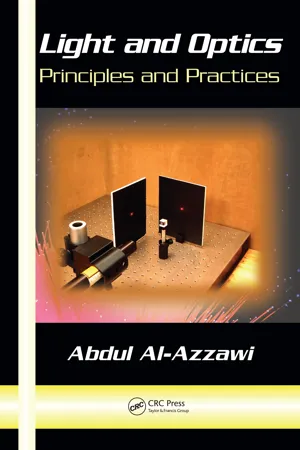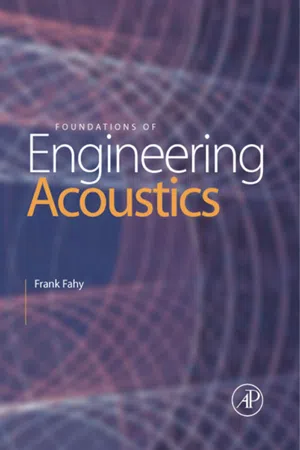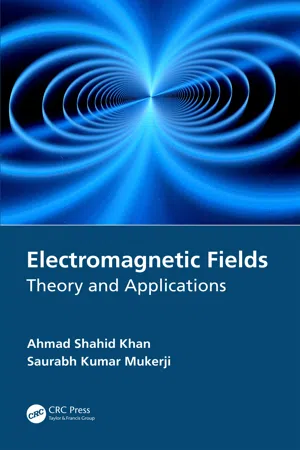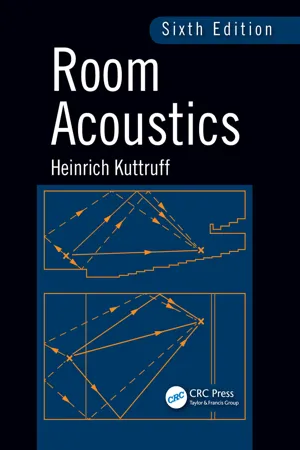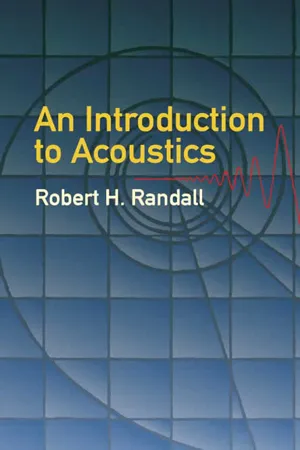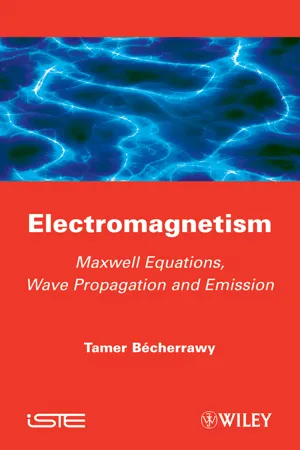Physics
Reflection
Reflection in physics refers to the change in direction of a wavefront at an interface between two different media, such as air and water. This change occurs because the wavefront bounces back after hitting the boundary. The angle of incidence is equal to the angle of reflection, and this principle is used in various optical devices and phenomena.
Written by Perlego with AI-assistance
Related key terms
Related key terms
1 of 4
Related key terms
1 of 3
9 Key excerpts on "Reflection"
- eBook - ePub
Light and Optics
Principles and Practices
- Abdul Al-Azzawi(Author)
- 2018(Publication Date)
- CRC Press(Publisher)
7 Laws of Light 7.1 INTRODUCTIONBasic understanding of the Reflection and refraction properties of light paved the way for many of the optical measuring devices in use today. When light strikes a surface, a portion of the incident ray is reflected from the surface. Depending on the surface characteristics, either specular Reflection or diffuse Reflection is observed. When light passes through an optically dense media, such as glass or water, the incident light ray bends as it enters the media. The characteristics of the material (air, glass, water, etc.) and the orientation of the ray determine the path of a reflected or refracted ray.The laws of Reflection and refraction govern the behaviour of light incident on a flat surface, separating two optical media. Light propagation through optical components is explained by these laws, as well as by critical and total internal Reflection.Four experimental lab cases presented in this chapter cover light passing through a water layer as an optical component. The experimental cases include observing laser light passing through a water layer, measuring the angle of incidence and angle of refraction, measuring and calculating the critical angle at the water–air interface, and measuring the total internal Reflection occurring at the water–air interface.7.2 LAW OF ReflectionLight travels in a straight line at a constant speed in a uniform optical medium. When a light ray traveling in a medium meets a boundary leading into a second medium, part of the incident ray reflects back to the first medium. Consider a light ray traveling in air incident at an angle (θi ) on a flat mirror surface, as shown in Figure 7.1 . A light ray incident on a mirror surface dividing two uniform media is described by an angle of incidence (θi ). This angle is measured relative to a line perpendicular to the reflecting surface, as shown in Figure 7.1 . Similarly, the reflected ray is described by an angle of Reflection (θrefl - eBook - ePub
- Frank J. Fahy(Author)
- 2000(Publication Date)
- Academic Press(Publisher)
12Reflection, Scattering, Diffraction and Refraction
12.1 Introduction
Sound waves propagating in fluid media rarely travel very far before meeting some region of which the state of the medium, and/or its dynamic properties, differ from those that support the incident wave. The difference may be very large, as in the case of air in a room enclosed by concrete wall, or rather small, as in the case of a bladderless fish in the ocean. The accommodation that must occur at the interface results in the generation of a secondary wave field in the medium that supports the incident wave. This is superimposed upon the original incident field and creates interference and modification of the pressure and intensity distributions. The processes of secondary wave field generation are broadly classified as ‘Reflection’, ‘scattering’ and ‘diffraction’. The alteration of the direction of wave propagation by incidence upon a different medium, or by non-uniformity of a supporting medium, is termed ‘refraction’.We are familiar with optical Reflection, refraction and scattering as exemplified by mirrors, the false apparent depth of swimming pools and frosted glass respectively. Optical diffraction is a more rarely encountered phenomenon. Whereas it is simple to categorize visible objects or features in terms of their scale relative to an average wavelength of light, we cannot do the same for sound waves. This is because the frequencies of visible light cover less than an octave while the audio-frequency range covers ten octaves. For example, a human head is small compared with a wavelength in air at 100 Hz, but large at 8000 Hz. Consequently, it is necessary to consider acoustic interaction with specific objects or features in three broad wavelength (frequency) ranges; ‘long’, ‘commensurate’ and ‘short’. In the commensurate range, where the scale of objects and features are of the same order as acoustic wavelengths, spatially complex secondary sound fields are generated that vary in form rapidly with change of frequency. Optical examples will be used to provide qualitative analogies of certain acoustic phenomena, but readers should be alert to their limitations in terms of the foregoing categorization. - eBook - ePub
Electromagnetic Fields
Theory and Applications
- Ahmad Shahid Khan, Saurabh Kumar Mukerji(Authors)
- 2020(Publication Date)
- CRC Press(Publisher)
17 Reflection and Refraction of Electromagnetic Waves17.1 Introduction
Reflection and refraction of electromagnetic waves are a key concern in any communication system and must be properly addressed. Whether guided or unguided, a wave may come across different type of environments and hindrances with varied geometries and media parameters. As a consequence, it may get reflected, refracted, diffracted, or absorbed. The wave behavior at the interface of different types of media requires the understanding of certain preliminaries, viz. the direction cosines, wave and phase velocities, nature of medium, boundary conditions to be satisfied, and the nature of striking waves, etc. In this chapter, Reflection and refraction cases are classified on the basis of type of material, type of surfaces, mode of incidence, and the type of polarization of the wave. In the first case, a material may be a perfect conductor, a perfect dielectric, or a mixture of both. In the second case, a surface may be perfectly flat (without any aberrations and irregularities) or of an irregular shape. In the third case, a wave may strike a surface perpendicularly or obliquely. Finally, in the fourth case, a wave may be vertically or horizontally polarized.17.2 Description of Some Basic Terms
In electromagnetic terminology a wave is conceived in terms of the periodic variation of E and H fields with time and space. Thus, the term striking wave refers to E and H impinging upon the boundary or on an interface between two media. This striking wave may cause induction of charges on the surface or flow of current in the material to which this surface belongs. The charges so induced remain on the surface, however, the current may either remain confined to the skin or may penetrate a little deeper. As observed in Chapter 16 the depth of penetration depends on the characteristics of the material and the wave frequency.The surfaces which are perpendicular to each other are referred to as orthogonal surfaces . These surfaces, referred to as boundary surface and plane of incidence , are shown in Figure 17.1 - eBook - ePub
- Jerry Marion(Author)
- 2012(Publication Date)
- Academic Press(Publisher)
CHAPTER 6Reflection and Refraction
Publisher Summary
The behavior of electromagnetic waves at the boundaries among various media is studied in this chapter. The dielectric constant and the conductivity of a medium determine the character of the Reflection and refraction of a wave that is incident upon the medium. Reflection, transmission, polarization, and some of the more simple aspects of metallic Reflection and refraction are discussed in the chapter. A plane electromagnetic wave that is incident upon the boundary (assumed to be a plane surface) between two dielectric media and shall inquire as to the behavior of the field vectors brought about by the requirement that the above boundary conditions must be satisfied. The chapter concludes with a brief discussion of guided waves.6.1 Introduction
In this chapter we shall study the behavior of electromagnetic waves at the boundaries between various media. We shall find that the dielectric constant and the conductivity of a medium determine the character of the Reflection and refraction of a wave that is incident upon the medium. The derivations will be based on the general electromagnetic equations which have been developed in the preceding chapters, and the results will be familiar from geometrical and physical optics. Indeed, many of the experimental verifications of electromagnetic theory and many of the most important applications are in the field of optics. An appreciable fraction of the remaining material in this book is also optical in nature.We begin by treating the case of normal incidence of an electromagnetic wave on a dielectric medium and then proceed to the general case of oblique incidence. Reflection, transmission, and polarization are discussed in detail, and then some of the more simple aspects of metallic Reflection and refraction are examined. The chapter concludes with a brief discussion of guided waves. The interaction of electromagnetic waves with both dielectric and conducting media will be discussed from a microscopic viewpoint in Chapter 9 - No longer available |Learn more
- Heinrich Kuttruff(Author)
- 2016(Publication Date)
- CRC Press(Publisher)
Chapter 2Reflection and scattering
Up to now, we have dealt with sound propagation in a medium which was unbounded in every direction. In contrast to this simple situation, room acoustics is concerned with sound propagating in enclosures where the sound-conducting medium is bounded on all sides by walls, ceiling and floor. These boundaries usually reflect a certain fraction of the sound energy impinging on them. Another fraction of the energy is ‘absorbed’, that is, it is extracted from the sound field inside the room, either by conversion into heat or by being transmitted to the outside by the walls. It is just this combination of the numerous reflected components which is responsible for what is known as ‘the acoustics of a room’ and also for the complexity of the sound field in a room.Before we discuss the properties of such involved sound fields, we shall consider in this chapter the process which is fundamental for their occurrence: the Reflection of a plane sound wave by a single wall or surface. In this context, we shall encounter the concepts of wall impedance and absorption coefficient, which are of special importance in room acoustics. The sound absorption by a wall will be dealt with mainly from a formal point of view, whereas the discussion of the physical causes of sound absorption and of the functional principles of various absorbent arrangements will be discussed in Chapter 6 .Strictly speaking, the simple laws of sound Reflection to be explained in this chapter hold only for unbounded walls. Any free edge of a reflecting wall or panel scatters some sound energy in all directions. The same happens when a sound wave hits any other obstacle of limited extent, such as a pillar or a listener’s head, or when it arrives at a basically plane wall which has an irregular surface. Since scattering is a common phenomenon in room acoustics, we shall briefly deal with it in this chapter. - Tamer Bécherrawy(Author)
- 2013(Publication Date)
- Wiley-ISTE(Publisher)
Chapter 7Reflection and Refraction of WavesIf a wave propagating in a medium encounters the face of another medium, it may be partially or totally reflected and a part may be transmitted across the interface. Ifuis the complex incident wave, the amplitudes and the phase shifts of the reflected waveu 'and those of the transmitted waveu "are determined by the boundary conditions on the interface, which depend on the nature of the wave and the media. We define the Reflection coefficient and the transmission coefficient respectively as the ratios of the complex amplitudes of the reflected wave and the transmitted wave to that of the incident wave:[7.1]Our purpose in this chapter is to study the laws of Reflection and transmission of waves. We start by studying the simple case of a one-dimensional elastic wave on two joined strings and sound in two pipes connected via a membrane; then, we study the case of three-dimensional sound waves. Afterwards, we consider the Reflection and transmission of electromagnetic waves on the interface of two dielectrics: a dielectric with a plasma and a dielectric with a conductor.7.1. Reflection of an elastic wave on two joined strings
Consider two strings of masses per unit lengthml1 andml2 respectively. They are joined at point O which we take as the origin of the x coordinate along the strings (Figure 7.1a ). The strings are assumed to be under a tension F and infinite toward the negative x and positive x. The propagation speeds on these strings are and- eBook - ePub
- Robert H. Randall(Author)
- 2012(Publication Date)
- Dover Publications(Publisher)
It is the purpose of this chapter to examine more closely the Reflection phenomena for longitudinal waves when the boundary conditions are intermediate between the two extremes. The problem is of great practical interest in connection with the acoustical behavior of rooms, since in such enclosures sound waves impinge upon wall surfaces which are rarely perfectly rigid. The exact extent and manner of the “yielding” in the presence of acoustic pressures affect the Reflection process in an important way and this in turn, as we shall see later, largely determines the suitability of the room for speech or music.8–2 Reflection of longitudinal waves at a boundary between two ideal elastic media, each infinite in extent.
As is usual in all branches of physics, we shall begin with a relatively simple situation and later, when we have developed some basic principles, proceed to the more complicated problems. Consider first two media, each having elastic and inertial properties, continuous and isotropic in nature and separated by a plane boundary, as in Fig. 8–1 . The regions to the right and to the left of the boundary are to be considered infinite in extent, so that no Reflections may occur except possibly at the boundary of separation. For the medium at the left, the density and wave velocity are ρ 1 and c 1 , respectively; for the medium at the right they are ρ 2 and c2 . The density ρ , as used in this chapter, will always refer to the average undisturbed value. No dissipative forces are present in either medium.Let us assume that a periodic plane wave advances toward the boundary from the left with exactly normal incidence. (The wave front will then be parallel to the plane of the boundary.) Assuming that Reflection and also transmission into the second medium may take place, we have then to consider the presence of three separate wave trains in the neighborhood of the boundary, the incident wave and the reflected wave to the left of the boundary, and the transmitted wave set up in the second medium, to the right of the boundary. In Fig. 8–1 these wave components are labeled respectively i, r, and t .FIG. 8–1 - eBook - ePub
- Pradeep Fulay, Jung-Kun Lee(Authors)
- 2016(Publication Date)
- CRC Press(Publisher)
Section 8.3.1 , we noted that the electric field of a light swings both free electrons and bound electrons in an illuminated medium. This electron motion by light induces AC electric current into the shined medium. If the electron–light interaction is elastic (e.g., no energy loss in the energy conversion process), AC electric current leads to reemission of the electromagnetic wave (called radiation). Though radiation from an individual electron spreads out circularly, the sum of reemitted waves originating from many electrons is not circular. This is because the interference between reemitted waves reconstructs the light propagation direction. Reconstruction of electromagnetic waves originating from many electrons through interference can be explained using the Huygens–Fresnel principle. Reflected light is a part of the reconstructed electromagnetic wave that travels backward. In other words, backward radiation by oscillating (or vibrating) electrons is the microscopic origin of Reflection.FIGURE 8.15 A schematic showing the relation among incident light, refracted light, and reflected light; the refractive index of an incident medium (n 1 ) is larger than that of a transmitted medium (n 2 ).If the size of the material on which light impinges is comparable to the wavelength of the incident light, backward radiation by oscillating electrons is called light scattering rather than light reflectance. Scattering will be studied in Section 8.5 . In comparison, reconstruction of the reemitted electromagnetic waves along a forward direction is important to understand refraction, which is the sum of incident light and forward radiation by electrons.One interesting question arising from Snell’s law is what if θi is large enough to make θt equal to 90° when light travels from a medium with higher refractive index to one with lower refractive index (i.e., n i > n t )? This incidence angle for θt = 90° is called the critical angle θc . At this condition, sinθc is the same as n t /n i - eBook - ePub
Electromagnetism
Maxwell Equations, Wave Propagation and Emission
- Tamer Becherrawy(Author)
- 2013(Publication Date)
- Wiley-ISTE(Publisher)
Chapter 11Reflection, Interference, Diffraction and Diffusion
In this chapter we study the laws of Reflection and transmission of electromagnetic waves at the interface of two mediums (one of them may be the vacuum). The wave may be totally or partially reflected, a part being transmitted across the interface. The amplitudes of the reflected wave and the transmitted wave, as well as their possible phase shifts, are determined by the boundary conditions at the interface. First, we formulate the laws determining the direction of propagation of the reflected wave and the transmitted wave in the case of two dispersive mediums. These laws hold for any type of wave. Then, we study the Reflection and refraction of electromagnetic waves on the interface of two dielectrics, of a dielectric with a conductor and of a dielectric with a plasma. In the second part of this chapter, we study the interference of two and several waves, the diffraction, and the diffusion of waves.11.1. General laws of Reflection and refraction
The laws of Reflection and refraction of light, which were initially established experimentally, were interpreted by Huygens for any type of wave. To simplify, we consider a scalar wave u , which propagates in a medium (1). If it meets the interface of this medium with another medium (2), generally there is a reflected wave u ′ back toward the medium (1) and a transmitted wave u " in the medium (2) ( Figure 11.1 ). Huygens' principle assumes that each point P of a wavefront Σo at time t o behaves like a point source, emitting a secondary wavelet S
Index pages curate the most relevant extracts from our library of academic textbooks. They’ve been created using an in-house natural language model (NLM), each adding context and meaning to key research topics.
Explore more topic indexes
Explore more topic indexes
1 of 6
Explore more topic indexes
1 of 4
